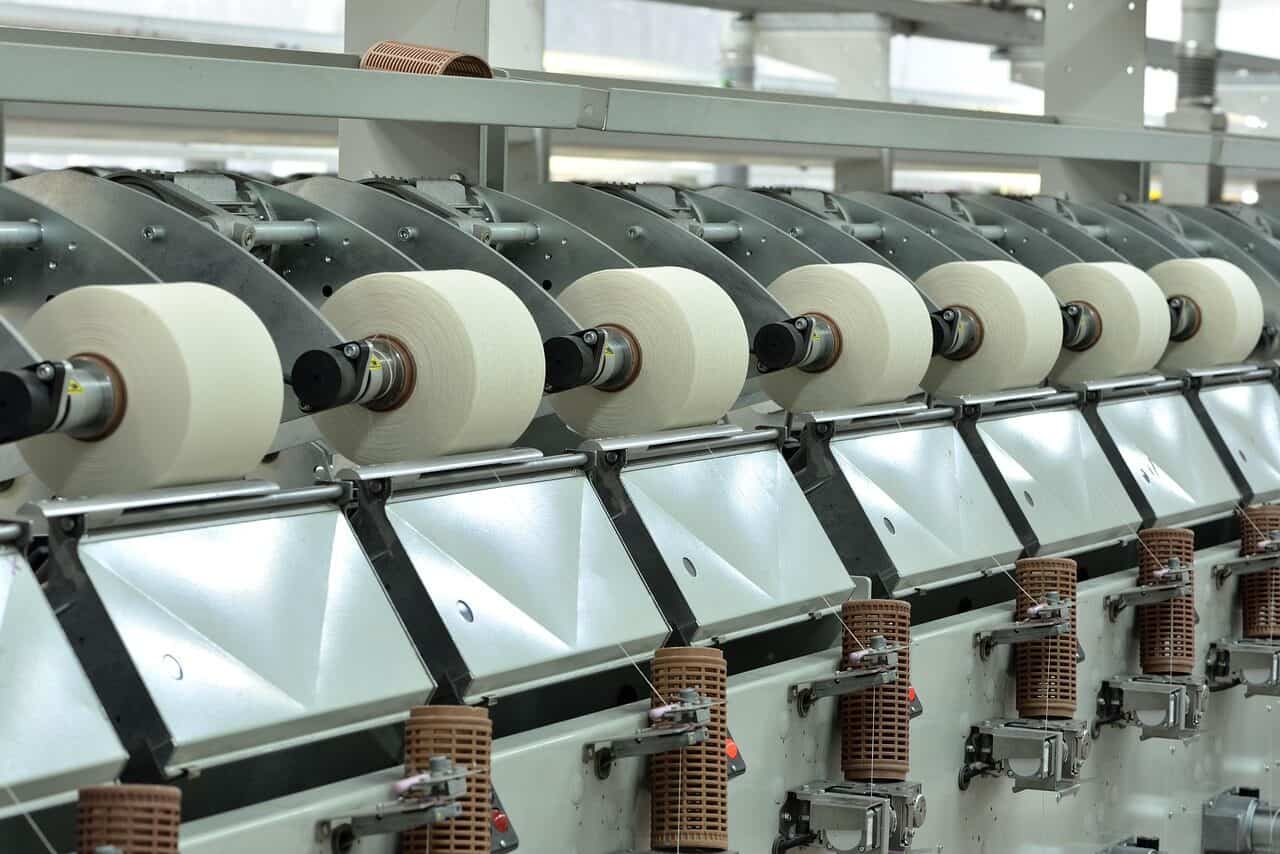How Top Cookie Companies Make Their Supply Chains Work Better: From Flour to Your Store
Ever wonder about the long journey your favorite chocolate chip cookie takes before it gets to your kitchen? That simple, tasty crunch is the final result of a worldwide, high-tech, and carefully planned process. The difference between a popular brand and one people forget often comes down to more than just the recipe – it’s about how well they manage their supply chain.
Top brands handle this complexity through a smart mix of working closely with partners, using advanced technology, and making decisions based on data. This isn’t just about moving ingredients and finished cookies around – it’s about creating a system that can respond quickly, work efficiently, and bounce back from problems. The heart of this success rests on three main areas we will look at closely: working deeply with suppliers, using comprehensive food automation logistics, and smart distribution methods.
This article gives you an expert look inside how this system works. We will follow each step of the modern biscuit supply chain, from getting raw materials to putting the final package on a store shelf. We will break down the strategies and technologies that make operations excellent and separate the best companies from the rest.
How Modern Supply Chains Are Built
A modern biscuit supply chain is not a simple, straight line but a highly connected and changing system. Each step is linked to others, with information flowing in all directions to help make decisions, predict problems, and make performance better. Understanding these main steps and their built-in challenges is the first step toward understanding how sophisticated the whole operation really is.
The Main Steps
- Getting Raw Materials
The process starts with finding high-quality ingredients like flour, sugar, oils, cocoa, and special flavorings, plus all the packaging materials needed. The main goal is to get consistent quality at a stable price. The key challenge is dealing with the natural price changes of farm products and making sure every batch meets strict quality and safety rules.
- Getting Materials to the Factory
Once bought, these raw materials must be moved to manufacturing plants and stored properly. This means managing truck fleets, scheduling deliveries, and keeping proper storage conditions. The main challenge is handling ingredients that can spoil and using just-in-time inventory systems to reduce storage costs and waste without risking production shutdowns.
- Manufacturing and Production
This is the heart of the operation where raw materials get changed into cookies. Processes include precise mixing, shaping, baking, cooling, and adding toppings or fillings. The main challenge is keeping absolute consistency in taste, texture, and appearance across millions of units while maximizing output and minimizing costly equipment breakdowns.
- Packaging
After cooling, cookies are packaged. This includes primary packaging (the individual wrappers that touch the product) and secondary packaging (boxes, cartons, and cases for shipping). Speed, accuracy, and cleanliness are most important. A big and growing challenge is balancing packaging’s protective job with the increasing demand for sustainable materials and reduced environmental impact.
- Warehousing and Shipping Out
Finished goods are stored in warehouses before being shipped to customers. This step includes inventory management, order fulfillment, and preparing shipments. The main challenges are making the best use of warehouse space, increasing the speed and accuracy of the pick-and-pack process, and managing many different types of products (SKUs).
- Distribution and Retail
The final part of the journey involves moving finished products from warehouses to regional distribution centers and, finally, to retail stores. The goal is to get the right product to the right place at the right time. Key challenges include complex route planning to save fuel and time, and carefully managing the “freshness window” to make sure consumers get the product at its best.
Pillar 1: Smart Sourcing
Top brands gain a competitive advantage long before the first batch of dough is mixed. They do this through smart sourcing and deep supplier partnerships. This approach changes the buying process from a series of simple purchases into a working partnership focused on shared success. True supply chain integration is about creating a smooth flow of information and materials between the manufacturer and its suppliers.
This deep teamwork is a powerful tool for reducing risks. By working closely with suppliers, manufacturers can get better visibility into potential problems, such as poor harvests or shipping bottlenecks, and plan accordingly. It also helps protect against the extreme price spikes common in commodity markets. Technology is the main enabler of this integration, with shared data platforms allowing for real-time communication on inventory levels, demand forecasts, and quality control numbers. For example, strong tracking systems, often powered by blockchain, can reduce the scope of a food safety recall by up to 95%, greatly limiting financial and brand damage by pinpointing the exact source of a problem in minutes rather than days.
Key Upstream Strategies
- Long-Term Partnership Agreements
Market leaders move beyond the uncertainty of the spot market. They make multi-year contracts with key agricultural producers and material suppliers. These agreements provide price stability for the manufacturer and a guaranteed market for the supplier, creating an environment of trust and long-term investment in quality and sustainable practices.
- Data-Driven Demand Forecasting
One of the biggest challenges in any supply chain is the “bullwhip effect,” where small changes in consumer demand get bigger as they move up the chain, leading to massive over-or-under-stocking. Leading companies reduce this by sharing their sales data and demand forecasts directly with their main suppliers. This openness allows suppliers to align their own production and raw material purchasing, creating a much more stable and efficient end-to-end system.
- Tracking and Transparency
In the food industry, safety cannot be compromised. Top-tier cookie manufacturers put in place strict tracking systems. This can involve QR codes on sacks of flour or blockchain-based records for cocoa beans, allowing every single ingredient to be traced back to where it came from. This not only provides an unmatched level of food safety assurance but also serves as a powerful marketing tool for consumers who demand to know where their food comes from.
- Ethical and Sustainable Sourcing
Today’s consumers increasingly make buying decisions based on a brand’s values. Recognizing this, leading companies have built ethical and sustainable sourcing into their core strategy. This includes commitments to using 100% sustainably sourced palm oil, fair-trade cocoa, or locally sourced wheat where possible. This is not just a corporate social responsibility initiative; it’s a critical risk management tool that protects the brand’s reputation and ensures a long-term, resilient supply of key ingredients.
Pillar 2: The Manufacturing Heart
The factory floor is the nerve center of the biscuit supply chain, where smart sourcing converts into real products. Here, efficiency, consistency, and speed are most important. The key to achieving this at scale is the deep implementation of food automation logistics. This concept goes beyond simple production machinery; it refers to the automated, intelligent movement and handling of all materials—from raw ingredients to finished pallets—within the four walls of the plant. It’s about creating a synchronized, robotic dance that minimizes human error, maximizes output, and ensures uncompromising quality.
Modern cookie facilities are amazing examples of engineering, where every step is optimized. Automated systems measure ingredients with gram-level precision, something impossible to copy manually at speed. Ovens have sensors that adjust temperature and humidity in real-time for the perfect bake. The true revolution of in-plant food automation logistics, however, is seen in the connections between these processes. Instead of manual labor pushing carts, self-driving vehicles carry out these tasks, operating 24/7 with perfect precision and creating a continuous, unbroken flow of production.
Key Automation Technologies
- Automated Ingredient Handling
Production begins with large-scale storage containers for core ingredients like flour and sugar. These are connected to automated measuring systems that weigh and deliver the precise amount of each ingredient required by the recipe directly to the industrial mixers. This eliminates manual measuring errors, reduces dust and potential contamination, and ensures absolute recipe consistency from the first cookie to the millionth.
- Robotic Process Automation in Production
In the mixing, forming, and baking stages, robotics and automation are essential. Robots perform heavy lifting and repetitive tasks, such as loading pans onto conveyor belts. Within the ovens, advanced sensor arrays monitor the baking process, ensuring each cookie achieves the target color, moisture content, and texture. This level of control is critical for maintaining brand standards.
- Automated Guided Vehicles (AGVs)
AGVs are the backbone of modern food automation logistics. These intelligent, self-driving vehicles are responsible for all material transport within the facility. They transport racks of freshly baked cookies from the ovens to the cooling tunnels, move finished products from the end of the line to the packaging area, and even deliver packaging materials to the machines that need them, all without human help.
- Vision Systems for Quality Control
Human inspection is subjective and impossible at the speeds of modern production lines. Instead, high-speed cameras and AI-powered vision systems inspect every single cookie. They scan for problems in size, shape, color, topping distribution, or breakage. Any product that does not meet the set quality standards is automatically removed from the line by a puff of air or a robotic arm, ensuring only perfect products proceed to packaging.
- Robotic Packaging and Stacking
Cookies are often fragile. Robotic arms with specially designed grippers can pick and place cookies into trays with a gentleness and speed that far exceeds human ability. These systems are then connected with wrapping machines and case packers. At the very end of the line, larger robots stack the finished cases onto pallets in precise, stable patterns, ready for the warehouse. This end-to-end automation greatly increases speed and improves workplace safety and comfort.
Traditional vs. Automated Plant Logistics
| Process Stage | Traditional Method | Automated Method (Food Automation Logistics) | Key Benefit of Automation |
| Ingredient Transport to Mixer | Manual weighing and transport of sacks/bins | Automated silos with pneumatic conveying and dosing systems | Unmatched precision, reduced labor, improved hygiene |
| Post-Baking Transfer | Manual pushing of hot racks to cooling areas | AGVs transport racks from ovens to cooling tunnels | Increased efficiency, 24/7 operation, enhanced worker safety |
| Quality Inspection | Visual spot-checks by line operators | AI-powered vision systems inspecting 100% of products | Complete quality assurance, data collection, reduced waste |
| Final Packaging & Palletizing | Manual hand-packing into cases and stacking pallets | Robotic pick-and-place, case packers, and robotic palletizers | Higher throughput, reduced product damage, superior consistency |
Pillar 3: Smart Distribution
Once a cookie is perfectly baked and packaged, the final, critical challenge begins: delivering it to the consumer. This downstream part of the supply chain, including warehousing and distribution, is a complex puzzle where efficiency and effectiveness must work together. The goal is not just to minimize cost but to maximize speed and protect product quality. Success in this area is driven by smart distribution strategies, heavily enabled by logistics automation and data analysis.
The modern warehouse is no longer a static storage facility; it is a dynamic hub of activity. The “brain” of this operation is a sophisticated Warehouse Management System (WMS), which coordinates every movement. This software directs the flow of goods from receiving docks to storage locations and from storage to outbound shipping, optimizing every step for speed and accuracy. In the distribution network itself, technology is used to conquer the “final mile.” Getting millions of packages of cookies to thousands of individual retail stores is a huge task, but AI and real-time data have transformed it from a guessing game into a science.
The Automated Warehouse
- Automated Storage and Retrieval Systems (AS/RS)
To maximize a warehouse’s space, leading companies use AS/RS. These are towering structures of racks, often over 100 feet high, serviced by computer-controlled robotic cranes. The cranes independently store incoming pallets of finished goods and retrieve the exact pallet needed for an outgoing order with incredible speed and precision. This technology dramatically increases storage density and reduces the labor and time required for fulfillment.
- Warehouse Management Systems (WMS)
The WMS is the central nervous system of the warehouse. It connects with the company’s main business system to manage inventory levels in real time. It directs AS/RS cranes, assigns tasks to human operators, and optimizes picking paths to minimize travel time within the facility. A powerful WMS is essential for managing the complexity of a high-volume food distribution center.
- Voice Picking and AR Glasses
For orders that are smaller than a full pallet (case-picking for smaller stores), technology assists human operators. Voice-directed picking systems provide instructions to workers through a headset, freeing their hands and eyes to focus on the task. The next step is Augmented Reality (AR) glasses, which can visually highlight the correct item and location, further boosting accuracy and efficiency.
Making the Final Mile Better
- Route Planning Software
A big portion of logistics cost is fuel and driver time. AI-powered route planning software is a game-changer for the distribution network. It analyzes thousands of variables—including delivery locations, traffic patterns, delivery time windows, vehicle capacity, and fuel costs—to calculate the most efficient delivery route for every truck, every day.
- Real-Time Fleet Tracking
Every delivery truck in a modern fleet has GPS and Internet of Things (IoT) sensors. This allows the central logistics team to monitor the location of every vehicle in real time. More importantly, sensors inside the trailer can monitor conditions like temperature and humidity, ensuring that the products are being transported in an optimal environment and triggering alerts if conditions change.
- Data-Driven Inventory Placement
Why ship a product across the country if you don’t have to? By analyzing point-of-sale data from retailers, companies can predict regional demand with high accuracy. This allows them to strategically place high-volume products in their distribution network, storing them in regional centers closer to the areas of highest demand. This strategy shortens delivery times, reduces transportation costs, and improves on-shelf availability.
Biscuit Supply Chain: Challenges & Solutions
| Supply Chain Stage | Key Challenge | Technology-Driven Solution | Impact/Benefit |
| Procurement | Ingredient price volatility & supply uncertainty | Long-term contracts & shared demand forecasting platforms | Cost stability, reduced bullwhip effect, stronger supplier relations |
| Manufacturing | Production line downtime & quality inconsistency | IoT sensors for predictive maintenance & vision systems | Increased Overall Equipment Effectiveness (OEE), near-zero defects |
| Distribution | Inefficient delivery routes & high fuel costs | AI-powered route optimization software | Reduced fuel consumption, shorter delivery times, lower carbon footprint |
Case Study: The GlobalBake Playbook
To see how these pillars come together, let’s look at the operations of a hypothetical industry leader, “GlobalBake Corp.,” famous for its “CrunchJoy” cookies. Viewing their process through the lens of a Supply Chain Director provides a practical blueprint for excellence. At GlobalBake, we don’t see the supply chain as a cost center; we see it as our primary competitive weapon.
Our journey begins with deep supply chain integration. We don’t just buy cocoa; we partner with farming cooperatives in key regions. Our shared data platform provides them with our two-year demand forecast, allowing them to plan their planting cycles. In return, we get real-time data on crop health and projected yields. This transparency was critical last year when an unexpected drought threatened a major harvest. Our system flagged the potential shortfall six months in advance, giving us plenty of time to secure volume from a partner in another region, completely avoiding a production disruption.
The implementation of food automation logistics inside our plants has solved three major bottlenecks for us: changeover times, quality control, and end-of-line packing. The “lights-out” module in our newest facility is a testament to this philosophy. In this section, AGVs deliver cooled cookies to a series of 30 robotic packaging cells. Each cell can be reprogrammed in under five minutes to handle a different cookie shape or package size. This flexibility, combined with our vision systems that reject one imperfect cookie in 50,000, is something manual operations could never achieve.
The GlobalBake Playbook
- From Farm to Factory
Our partnership with wheat suppliers goes beyond simple purchasing. We provide them with access to our quality control data, showing them exactly how their crop’s protein levels affect the final bake of our CrunchJoy cookies. This feedback loop has helped them refine their farming practices, leading to a 10% improvement in ingredient consistency over three years.
- The “Lights-Out” Production Module
The most advanced section of our flagship plant runs almost entirely without human intervention from post-baking to stacking on pallets. This module, focused on our highest-volume products, operates with an Overall Equipment Effectiveness (OEE) of over 90%, compared to an industry average closer to 70%. This is the pinnacle of food automation logistics.
- Winning the Shelf-Space Battle
The final piece of the puzzle is our responsive distribution network. Our WMS is connected directly with the inventory systems of our largest retail partners. When stock of CrunchJoy cookies at a specific distribution center drops below a set level, our system automatically triggers a replenishment order from the nearest plant. This proactive approach is why our on-shelf availability is consistently above 99%, ensuring a customer looking for CrunchJoy always finds it.
Measuring Success: KPIs at GlobalBake
| KPI (Key Performance Indicator) | What It Measures | GlobalBake’s Target | Why It’s Crucial |
| Order Fill Rate | Percentage of customer orders shipped completely on the first shipment | >99.5% | Directly impacts customer satisfaction and prevents lost sales |
| Inventory Turnover | The number of times inventory is sold and replaced over a period | 12x per year | Measures capital efficiency; high turnover means less cash tied up in stock |
| On-Time In-Full (OTIF) | The percentage of orders delivered on time, with the correct items and quantity | >98% | The ultimate measure of reliability; crucial for maintaining trust with retailers |
| Overall Equipment Effectiveness (OEE) | A composite metric of manufacturing productivity (Availability x Performance x Quality) | >85% | The gold standard for measuring factory efficiency and production cost control |
The Future: A Strong Chain
For decades, the main goal of supply chain management was simple: efficiency. The focus was on lean principles, just-in-time inventory, and minimizing cost above all else. However, recent global disruptions—from pandemics to political conflicts and climate events—have exposed the weakness of super-efficient, low-backup systems. The future of the biscuit supply chain, and indeed all supply chains, is being redefined. Efficiency remains critical, but it is now balanced by two new needs: resilience and sustainability.
The next generation of supply chain leaders will be those who can build systems that not only perform perfectly in stable conditions but can also bend without breaking when faced with the unexpected. Technology, particularly AI, will be the key enabler of this more dynamic and intelligent model.
Key Future Trends
- Building Resilience
The “single-source” supplier model is being replaced by a diversified portfolio approach. Companies are actively mapping their entire supply network to identify single points of failure and developing backup plans. This includes qualifying secondary suppliers in different geographic regions (near-shoring or friend-shoring) to create redundancy and flexibility in the face of regional disruptions.
- The Circular Economy in Packaging
Sustainability is moving beyond simply using recyclable materials. The future is in the circular economy, which emphasizes reducing material use altogether, designing packaging for reuse, and creating closed-loop systems where old packaging is collected and remade into new. This presents a massive challenge and opportunity for the industry.
- AI and Predictive Analytics
The current model is data-driven; the future model is predictive. The next wave of AI will not just report on what happened; it will anticipate what is going to happen. By analyzing vast datasets—including weather patterns, satellite imagery, social media trends, and shipping lane congestion—AI will be able to predict a poor harvest, a logistics bottleneck, or a spike in consumer demand weeks or months in advance, allowing managers to take proactive measures.
- Ultra-Personalization
As logistics automation becomes more flexible, the possibility of mass customization becomes more real. Imagine a future where a consumer could order a custom box of cookies—choosing the base, the filling, and the topping—and have it produced and delivered within days. This level of personalization, enabled by agile robotics and direct-to-consumer distribution models, is the long-term frontier.
The Blueprint for Excellence
Making a modern biscuit supply chain work better is a game of small improvements, won through constant improvement and strategic planning. The blueprint for excellence is clear and rests on three foundational pillars. It begins with deep supply chain integration, transforming supplier relationships into transparent, collaborative partnerships. It is powered by an aggressive adoption of food automation logistics, which drives unmatched efficiency, quality, and safety within the factory. Finally, it is realized through an intelligent, data-driven distribution network that ensures the right product is in the right place at the right time.
Technology is the thread that weaves these pillars together, but it is strategy that gives them purpose. The principles that allow leading brands to deliver the perfect cookie, consistently and profitably, are a masterclass in operational excellence. This blueprint is not just for cookies; it is the model for the future of the entire fast-moving consumer goods industry.
Frequently Asked Questions (FAQs)
Q1: What is the “bullwhip effect” in cookie supply chains, and how do companies prevent it?
The bullwhip effect occurs when small fluctuations in consumer demand at the retail level get amplified as they move upstream through the supply chain, causing massive overproduction or stock shortages at the manufacturing level. For example, a 5% increase in store sales might trigger a 20% increase in orders to the manufacturer, and a 40% increase in raw material orders.
Prevention strategies include:
- Real-time data sharing between retailers, manufacturers, and suppliers
- Collaborative demand forecasting using shared platforms
- Longer-term contracts instead of spot-market purchasing
- Smoothing order patterns rather than reacting to every small fluctuation
Leading cookie companies use integrated supply chain software that gives all partners visibility into actual consumer demand, not just order data.
Q2: What is “food automation logistics” and how is it different from regular factory automation?
Food automation logistics goes beyond just automating individual production machines. It refers to the complete, intelligent automation of material flow throughout the entire facility—from raw ingredient storage to finished pallet staging.
Key differences:
- Traditional automation: Individual machines (mixers, ovens, wrappers) operate automatically
- Food automation logistics: The entire material transport system is automated and coordinated
Components include:
- Automated ingredient dosing and delivery systems
- AGVs (Automated Guided Vehicles) for internal transport
- Robotic pick-and-place systems
- AI-powered vision inspection
- Integrated warehouse management systems
The result is a continuous, 24/7 flow with minimal human intervention and maximum consistency.
Q3: How do cookie companies ensure ingredient traceability from farm to finished product?
Modern traceability systems use a combination of technologies:
At the supplier level:
- Lot coding and batch numbers on all incoming ingredients
- Certificates of Analysis (COA) with every shipment
- QR codes or RFID tags on packaging (flour bags, chocolate shipments)
- Blockchain technology for high-value ingredients like cocoa
During manufacturing:
- ERP systems that record which ingredient lots went into which production batches
- Real-time data capture at every process step
- Retention samples stored for every production run
Result: If a contamination issue arises, companies can trace the exact source in minutes instead of days, potentially reducing recall scope by 95% and saving millions in costs and brand damage.
Q4: What is an AS/RS system and why do cookie companies use them?
AS/RS (Automated Storage and Retrieval System) is a warehouse technology featuring:
- Towering rack structures up to 100+ feet high
- Computer-controlled robotic cranes that store and retrieve pallets
- Automated movement with no forklifts or manual handling
Benefits for cookie companies:
- Maximized vertical space: 3-4x more storage in the same footprint
- Faster order fulfillment: Cranes retrieve pallets in 2-3 minutes vs. 10-15 minutes manually
- Reduced damage: Consistent, gentle handling protects fragile cookies
- Improved inventory accuracy: Computer tracking eliminates human error
- Labor savings: One system can replace 5-10 forklift operators per shift
This is especially valuable for cookie companies managing hundreds of SKUs with varying shelf lives.
Q5: How do route optimization systems actually save money in cookie distribution?
AI-powered route planning software analyzes thousands of variables simultaneously:
Input factors:
- Delivery addresses and time windows
- Current traffic conditions and historical patterns
- Vehicle capacity and fuel efficiency
- Driver hours-of-service regulations
- Product priority and freshness requirements
Results:
- 15-25% reduction in total miles driven
- 20-30% fewer vehicles needed for the same deliveries
- Improved on-time delivery rates (95%+ vs. 80-85% manual planning)
- Lower carbon footprint through optimized routing
Real-world example: A company delivering to 500 stores daily might save 300 miles per truck per day. At $4/gallon and 6 mpg, that’s $50/day per truck, or $250,000+ annually across a 20-truck fleet.
Q6: What is “just-in-time” inventory and why is it risky for cookie manufacturers?
Just-In-Time (JIT) inventory means receiving raw materials and ingredients exactly when needed for production, minimizing warehouse storage costs and reducing waste.
Benefits:
- Lower inventory carrying costs
- Reduced warehouse space requirements
- Less risk of ingredient spoilage
- Improved cash flow
Risks (exposed by recent disruptions):
- No buffer stock for supply interruptions
- Vulnerable to shipping delays (port congestion, weather, strikes)
- Single-source dependencies create major vulnerabilities
- Cannot respond quickly to unexpected demand spikes
Modern approach: Leading companies now balance JIT efficiency with strategic safety stock of critical ingredients (like flour, sugar) while maintaining JIT for perishables and specialty items. This “just-in-case” hybrid model provides resilience without excessive costs.
Q7: How do cookie companies use predictive analytics to anticipate supply chain problems?
Predictive analytics uses AI and machine learning to forecast issues before they occur:
Data sources analyzed:
- Weather patterns in agricultural regions (flour, cocoa supply)
- Satellite imagery of crop health
- Shipping lane congestion reports
- Social media sentiment trends
- Historical seasonal demand patterns
- Commodity price movements
Predictive capabilities:
- Crop yield predictions 6 months in advance
- Port congestion forecasts allowing route changes
- Demand surge predictions from social media trends
- Equipment failure predictions from sensor data (vibration, temperature)
Example: A predictive system might detect unusual weather patterns in wheat-growing regions 4 months before harvest, allowing the company to lock in alternative supply contracts before prices spike or shortages occur.
Q8: What does “near-shoring” mean and why are cookie companies doing it?
Near-shoring means sourcing ingredients or packaging from geographically closer suppliers rather than distant international sources.
Traditional model: Source cocoa from West Africa, packaging from Asia Near-shoring model: Source cocoa from Central America, packaging from North America
Drivers:
- Reduced shipping times: Days instead of weeks
- Lower transportation costs: Shorter distances, less fuel
- Better supply chain visibility: Easier to visit and audit suppliers
- Greater flexibility: Faster response to demand changes
- Risk mitigation: Less exposure to international shipping disruptions
- Sustainability: Lower carbon footprint from reduced transport
Trade-offs: Near-shore suppliers may have higher per-unit costs, but total cost of ownership (including logistics, inventory carrying costs, and risk) is often lower.
Q9: What KPIs (Key Performance Indicators) do cookie supply chain managers track?
Critical supply chain KPIs:
Supplier Performance:
- On-time delivery rate (target: >98%)
- Quality acceptance rate (target: >99%)
- Lead time consistency
Manufacturing:
- Overall Equipment Effectiveness (OEE) (target: >85%)
- Production yield (target: >98%)
- Changeover time (minimize downtime)
Distribution:
- Order Fill Rate (target: >99.5%)
- On-Time In-Full (OTIF) delivery (target: >98%)
- Perfect Order Rate
- Inventory turnover (target: 10-12x per year)
Financial:
- Days Inventory Outstanding (DIO)
- Cash-to-Cash cycle time
- Total supply chain costs as % of revenue
Modern additions:
- Carbon footprint per unit shipped
- Supply chain resilience score
Q10: How does blockchain technology improve food safety in cookie supply chains?
Blockchain creates an immutable, shared digital ledger that records every transaction and movement in the supply chain:
How it works:
- Farmer/Producer records harvest data and creates a digital certificate
- Each handler (processor, transporter, manufacturer) adds their transaction to the chain
- Data cannot be altered retroactively—blockchain ensures integrity
- All authorized parties can view the complete history in real-time
Benefits for cookie manufacturers:
- Instant traceability: Track flour back to specific farm in seconds vs. days
- Recall precision: Identify exactly which finished products contain contaminated ingredients
- Fraud prevention: Verify authenticity of premium ingredients (organic, fair-trade)
- Regulatory compliance: Automatic documentation for food safety audits
- Consumer transparency: QR codes on packages link to full ingredient history
Example scenario: If Salmonella is detected in a flour shipment, blockchain instantly identifies which specific batches used that flour, limiting the recall to thousands of packages instead of millions—potentially saving $10M+ in recall costs.
- Supply chain management – Wikipedia https://en.wikipedia.org/wiki/Supply_chain_management
- Food Supply Chain Management Guide – GEP Blog https://www.gep.com/blog/strategy/food-supply-chain-stages-models-challenges-best-practices
- Transforming Food Supply Chain Management Through Automation – Food Logistics https://www.foodlogistics.com/software-technology/automation/article/22891670/loftware-inc-transforming-food-supply-chain-management-through-automation
- Supply Chain Management in the Food Industry – Centric Software https://www.centricsoftware.com/blog/supply-chain-management-in-the-food-industry/
- Food supply chain: a comprehensive guide – DNV https://www.dnv.com/assurance/food-and-beverage/food-supply-chain-stages-models-and-practices/
- Automated Guided Vehicle – Wikipedia https://en.wikipedia.org/wiki/Automated_guided_vehicle
- AGV and Industry 4.0 in warehouses – Springer https://link.springer.com/article/10.1007/s00170-024-14127-0
- Warehouse management system – Wikipedia https://en.wikipedia.org/wiki/Warehouse_management_system
- Restaurant Supply Chain Automation and Digitization – Deloitte https://www.deloitte.com/us/en/Industries/consumer/articles/restaurant-supply-chain-automation.html
- Automated Storage and Retrieval System (AS/RS) – Dematic https://www.dematic.com/en-us/products/storage-retrieval/automated-storage-and-retrieval-system/













